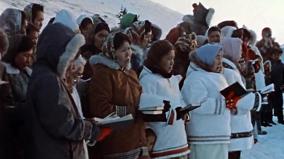Skip to content
Accessibility
Culture (21)
-
 Si le temps le permet (version inuktitut)2003 27 min
Si le temps le permet (version inuktitut)2003 27 min -
 Three Thousand (Inuktitut Version)2017 14 min
Three Thousand (Inuktitut Version)2017 14 min



















